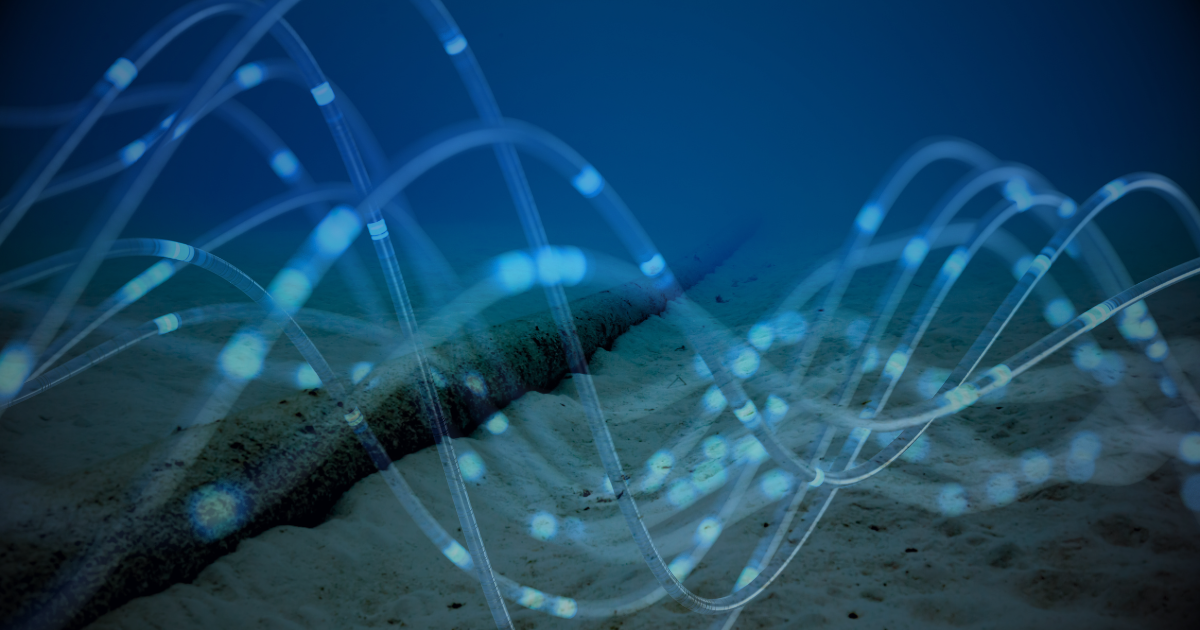
Undersea Cable Sabotage Is 21st Century Siege Warfare
Amid escalating threats to global undersea infrastructure, NATO is moving to establish a dedicated centre of excellence designed to deter, defend against, and ultimately prevent sabotage of critical seabed assets.
This follows a series of increasingly brazen incidents in the Baltic Sea accompanied by emerging technological developments from China. Vice Admiral (Ret’d) Duncan Potts CB, Director at Universal Defence and Security Solutions, frames these threats as part of a broader strategic pattern.
“Disrupting [infrastructure] is as old as warfare itself,” Adm. Potts observed during a recent panel at the IT2EC conference. “In the Middle Ages, it would be trying to contaminate the water supply whilst you’re besieging a castle. Today, it’s cutting cables on the seabed.”
A Threat Hidden in Plain Sight
Potts’ comments emphasise how NATO increasingly recognise that undersea sabotage is not an anomaly, but in fact a tactic of gray zone warfare: actions that are just shy of open conflict. He compared recent acts of cable tampering to historic siege tactics, highlighting how adversaries exploit ambiguity to inflict damage without triggering a full-scale response.
The Nord Stream pipeline explosions in September 2022 - which were widely seen as sabotage - were the catalyst, and worryingly, were far from isolated incidents. One particularly suspicious event saw a Chinese-flagged trawler accused of dragging its anchor across telecom cables linking Lithuania to Sweden and Finland to Germany. While accidents like this aren’t unusual, regional leaders said these incidents were intentional.
“These are simply another form of gray zone warfare,” Adm. Potts said. “You don't need explosives or a military vessel - just deniability.”
NATO’s Strategic Countermove
In response, NATO plans to establish a centre of excellence that Adm. Potts says will serve a three-pronged role: to deter, protect against, and thwart sabotage efforts. While not officially confirmed, Italy has been floated as a likely host nation, according to Italian Navy Rear Adm. Placido Torresi.
The initiative aligns with wider NATO efforts like Project Mainsail, a mission to map and monitor seabed infrastructure. It also reflects growing concern about China’s advances in seabed warfare capabilities.
A recent report from the South China Morning Post revealed a tool developed by China’s Ship Scientific Research Centre that can cut through reinforced undersea cables at depths of up to 13,000 feet - almost double the usual deployment depth.
Adm. Potts sees such developments not just as hypothetical risks, but as clear signs of capability backed by intent.
Surveillance and Preparedness
To reinforce its readiness, NATO has deployed a task force to the Baltic Sea, including vessels and maritime surveillance from countries such as Norway, Finland, Sweden, Lithuania, Estonia, and Latvia.
Speaking at the same IT2EC panel, U.S. Air Force Maj. Gen. James Kriesel emphasised the multinational scope of this effort: “There is a dedicated group of countries that are using their… sea assets to try to figure out what’s happening here over time.”
But as Adm. Potts emphasised, surveillance alone isn’t enough. “We must shift from reactive to preventative,” he said. “That means deterrence through resilience, and through visibility. Our adversaries need to know that we’re watching.”
The Battle for the Seabed
Undersea cables carry 95 percent of global internet traffic and connect critical energy infrastructure. Disruption could cripple economies and communications before a single shot is fired. Therefore, Adm. Potts feels that it’s clear what’s at stake.
“The seabed is no longer just a physical environment,” he warned. “It’s a contested domain. We need to start treating it that way.”
By creating its new centre and adopting an expanded strategic posture, NATO aims to tackle this challenge directly. The combination of technological innovation, intelligence-sharing, and real-time monitoring will better position them to defend the modern world’s least-seen but most important lifelines.
Discover how UDSS can support your nation’s maritime security operations — or those of your commercial fleet: https://www.universal-defence.com/maritime-security-solutions

